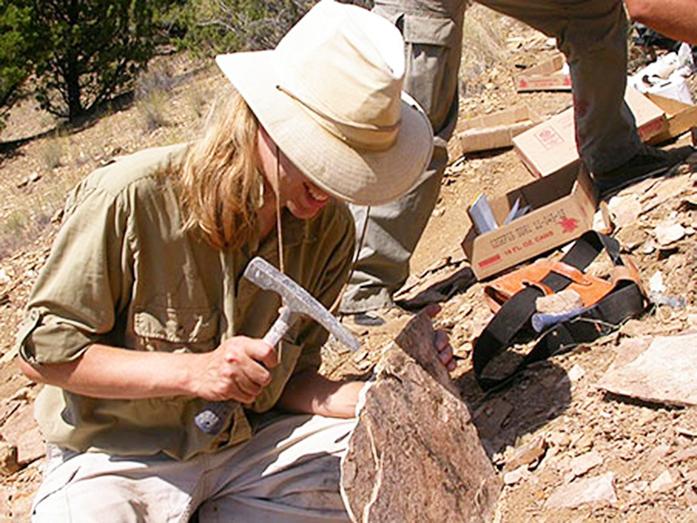A UI graduate student was part of a team researching a new species.
By Anis Shakirah Mohd Muslimin
[email protected]
Deep in a narrow crystal chamber, a team of scientists had uncovered ancient human fossils of a new human-like species — and a University of Iowa doctoral student was part of that discovery.
In the fall of 2013, cavers in Johannesburg, South Africa, stumbled upon the remains and alerted an anthropology professor, Lee Berger of University of the Witwatersrand. Berger then put together a team of researchers to examine the site.
The team of scientists reported the discovery of more than 1,500 fossils that represent at least 15 individuals and a newly discovered species: Homo naledi.
“I applied to be part of the actual analysis and description of the fossils,” said Jill Scott, a UI doctoral student in anthropology, with a focus on paleoanthropology.
For her research, Scott focused on cranial mandibular materials — in other words, the skulls of the fossils.
The skulls displayed a unique combination of characteristics from the modern human genus, homo, and the primitive genus that precedes it, Australopithecus.
“Their brain size is more consistent to Australopithecus, but their skull shape is more consistent with homo,” Scott said.
Scientists are fairly certain that the species is of the homo genus.
“The reason they argue it is homo is because of its certain cranial features, and because it’s got complete hands and nearly complete feet,” Russell Ciochon, a UI biological anthropology professor and a renowned expert on early hominins. “The key here is it’s such a complete specimen, so we know so much more about a single slice of time.”
Despite new physical information the fossils provide, the age of the materials still remains a mystery, making it hard to predict where Homo naledi falls in the scheme of human evolution.
“We don’t know how long ago the species lived, so it is a bit difficult to say where it fits in the human lineage,” Scott said.
The research team encountered several issues when it came to determining the age of the fossils, she said.
The nature of the sediments that the fossils were deposited in created a huge problem for Scott and her teammates.
Additionally, they could not use the common dating method of faunal correlation because there was no other ancient animal fossils discovered in the cave along with the human-like fossils.
Senior scientists on the project have tried three different approaches to determine the date of the materials, but none have worked. They are currently working on additional attempts, Scott said.
However, the research has helped anthropologist discover more “pocket populations of hominins,” she said. Hominin is the term used for primates on the human lineage.
Ed Liebow, executive director of the American Anthropological Association, praised the discovery, calling it “science at its best.”
“It’s really exciting new evidence” he said. “It’s discoveries like this that excite students and make them think about the possibilities that they might enroll in a class that will help them understand these essential human conditions, are very exciting for us.”
Besides Scott, former UI doctoral candidate, K. Lindsay Hunter was also part of the research team, and was one of the members who went into the cave itself.
“The fact that Jill was invited to work on it, and the fact that Lindsey was actually part of the team that made the discovery is important, because both of these students were trained here,” Ciochon said.







